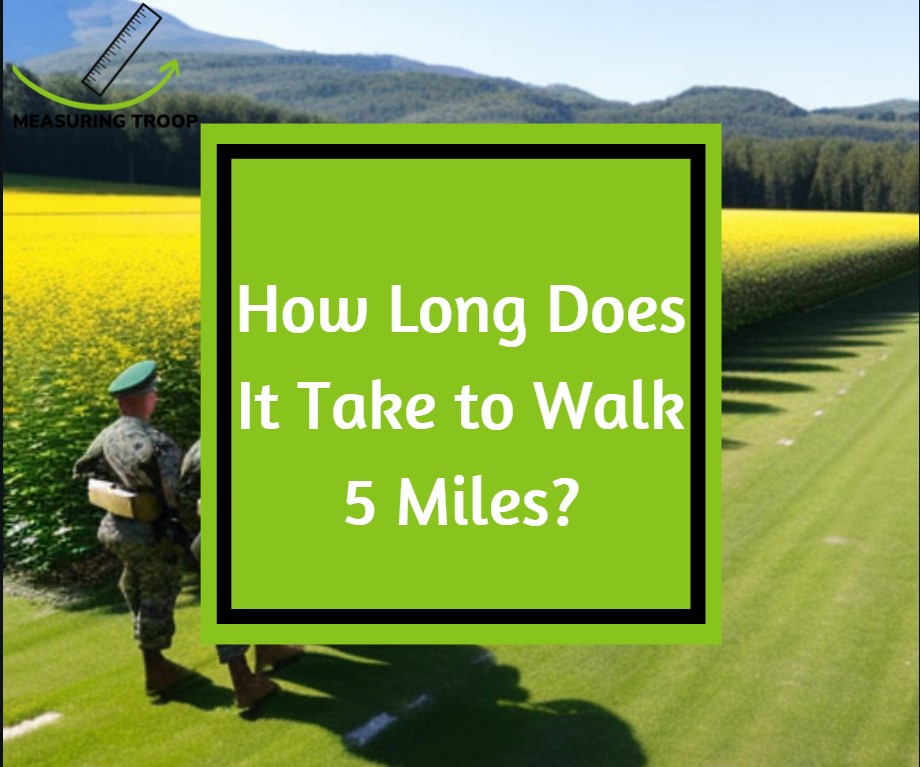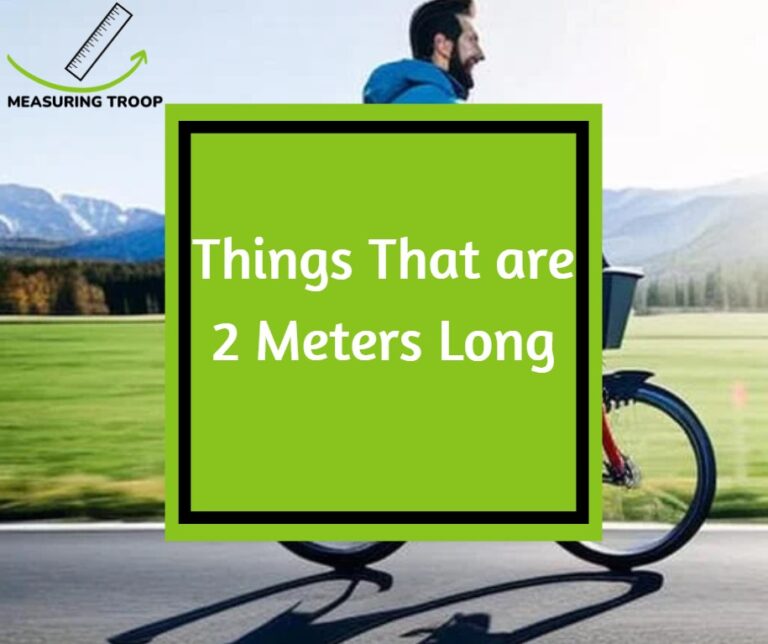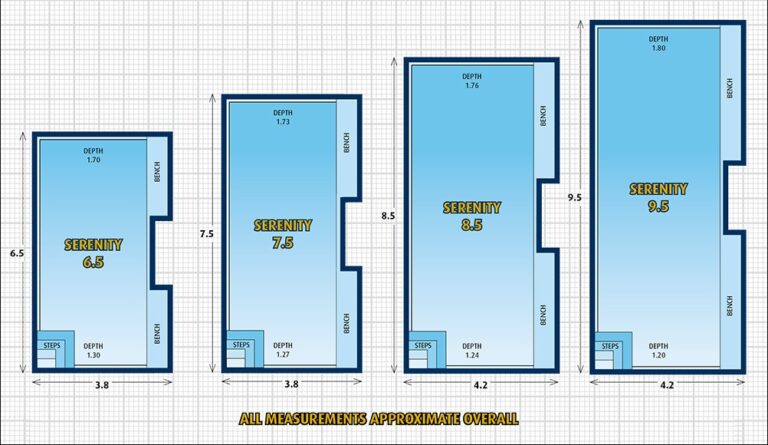How Long Does It Take to Walk 5 Miles?

It typically takes around 1 to 1.5 hours to walk 5 miles at a moderate pace. Walking 5 miles can be a great way to stay active and get some exercise.
The time it takes to complete a 5-mile walk depends on various factors, such as the individual’s walking speed and the terrain. Generally, walking at a moderate pace of around 3 miles per hour would take approximately 1 to 1.
5 hours to cover 5 miles. However, individuals who walk at a faster pace or on more challenging terrain may be able to complete a 5-mile walk in less time. It is important to listen to your body and set a comfortable pace that allows you to enjoy the walk while still getting the desired health benefits.
Factors Affecting Walking Speed
Factors such as age, fitness level, terrain, and pace can affect the time it takes to walk 5 miles.

Whether you are a beginner or an experienced walker, there are several factors that can affect your walking speed when covering a distance of 5 miles. Understanding these factors can help you plan your walking routine more effectively and estimate the time it will take you to complete your journey.
Let’s explore the key factors that impact walking speed:
Fitness Level:
- Overall fitness plays a significant role in determining your walking speed. A fitter individual tends to walk at a faster pace compared to someone who is less fit.
- Regular exercise and aerobic activities can improve your cardiovascular endurance and muscle strength, enabling you to walk briskly for a longer duration.
- Tip: Incorporate regular exercise into your routine, such as walking, jogging, or cycling, to improve your overall fitness level and increase your walking speed.
Terrain:
- The type of terrain you encounter during your walk can significantly influence your speed. Walking on different surfaces can pose varying challenges and impact your walking pace differently.
- Uphill: Walking uphill requires more effort as you work against gravity, leading to a slower pace.
- Downhill: Walking downhill is generally easier and allows for a faster pace, but be cautious to avoid straining your joints.
- Uneven surfaces: Walking on uneven surfaces like gravel or trails with obstacles can slow you down due to the need for stability and balance.
- Tip: Be mindful of the terrain you’ll encounter on your route and adjust your walking speed accordingly. When planning a longer walk, take into account any elevation changes or challenging surfaces.
Weather Conditions:

- Weather conditions can affect your walking speed and comfort level during your journey.
- Hot weather: Walking in hot temperatures can result in fatigue and dehydration, impacting your pace and overall performance.
- Cold weather: Cold temperatures can make your muscles feel stiff, potentially reducing your walking speed.
- Wind: Strong winds can create resistance, requiring more effort and potentially slowing you down.
- Rain or snow: Slippery surfaces can lead to cautious walking to prevent accidents, which can consequently affect your speed.
- Tip: Check the weather forecast before your walk and dress appropriately for the conditions. Stay hydrated and take breaks if needed, particularly in extreme weather.
By considering these factors, you can estimate how long it will take you to walk 5 miles. Remember to listen to your body, set realistic goals, and gradually improve your walking speed as your fitness level progresses. So, lace up your shoes, choose a beautiful route, and enjoy the benefits of walking while staying mindful of these influencing factors!
Average Walking Speed
Walking at an average speed, it takes approximately one hour and 40 minutes to cover a distance of 5 miles.
Walking is a popular form of exercise and transportation that offers numerous health benefits. The average walking speed can vary from person to person and can be influenced by several factors. Understanding the average walking speed and the factors that can affect it can help you plan and estimate how long it might take to walk a certain distance, such as 5 miles.
Factors That Can Affect An Individual’s Walking Speed:
Several factors can impact an individual’s walking speed, causing some variation in how long it takes to complete a certain distance. Some common factors to consider include:
- Age: As individuals age, their walking speed may decrease due to various factors such as reduced muscle strength and flexibility.
- Fitness level: People who engage in regular exercise and maintain a higher level of fitness often have a faster walking speed compared to those who are less active.
- Terrain: Walking on flat ground typically allows for a faster walking speed compared to walking on uneven or hilly terrain, where speed may decrease to accommodate the challenges of the terrain.
- Weather conditions: Extreme weather conditions, such as strong winds, rain, or snow, can affect walking speed as individuals may need to slow down or adjust their pace for safety and comfort.
- Injury or disability: Physical injuries or disabilities can significantly impact a person’s walking speed. Individuals with mobility impairments may walk at a slower pace compared to individuals without any limitations.
These factors can contribute to variations in walking speed and ultimately affect the time it takes to complete a specific distance.
The Typical Time It Takes To Walk 1 Mile:
While individual walking speeds can vary, it can be useful to understand the approximate time it takes to walk a mile. On average, a person with a moderate walking speed can complete a mile in around 15 to 20 minutes.
However, this estimation can change based on individual factors and conditions.
Keep in mind that this average does not account for factors like resting, brief stops, or changes in walking pace. Additionally, a slower walking speed may be necessary for individuals who are just starting their fitness journey or have specific health concerns.
Understanding average walking speeds and the factors that can influence them provides a foundation for estimating how long it might take to walk a certain distance, such as 5 miles. Remember to consider individual circumstances, terrain, and other factors when planning your walking journeys.
Calculating Time To Walk 5 Miles
Want to know how long it takes to walk 5 miles? Well, the time to cover this distance can vary depending on your pace, fitness level, and terrain. However, on average, it usually takes around one to two hours to complete a 5-mile walk.
Walking is a fantastic form of exercise that promotes overall health and wellness. If you’re wondering how long it takes to walk 5 miles, various factors come into play, such as your walking speed and terrain. Let’s dive into the details and calculate the time it might take based on different walking speeds.
Formula To Estimate The Time It Takes To Walk 5 Miles:
To estimate the time it takes to walk 5 miles, you can use a simple formula: Distance ÷ Speed = Time. Here’s how you can calculate it:
- Distance: 5 miles (your desired walking distance)
- Speed: Your walking speed in miles per hour
- Time: The estimated time it will take you to cover the distance
Example Calculations Based On Different Walking Speeds:
- Slow Walking Speed (2 mph):
- Time = 5 miles ÷ 2 mph
- Time = 2.5 hours (or 2 hours and 30 minutes)
- Average Walking Speed (3 mph):
- Time = 5 miles ÷ 3 mph
- Time = 1.67 hours (or roughly 1 hour and 40 minutes)
- Brisk Walking Speed (4 mph):
- Time = 5 miles ÷ 4 mph
- Time = 1.25 hours (or 1 hour and 15 minutes)
Remember, these calculations are estimations and can vary based on individual factors such as fitness level, terrain, and overall endurance. Additionally, it’s worth noting that walking at a faster pace can provide a more vigorous workout and potentially yield additional health benefits.
Now that you have a better understanding of how to calculate the time it takes to walk 5 miles based on different speeds, you can plan your walking routines accordingly. So, lace up your shoes, embrace the benefits of walking, and enjoy your journey towards a healthier lifestyle!
Tips For Increasing Walking Speed
Increase your walking speed with these helpful tips. Discover how long it takes to walk 5 miles and improve your fitness level by following these guidelines.
For some people, walking may seem like a leisurely activity. However, if you’re looking to challenge yourself and push your limits, increasing your walking speed can be a great goal to strive for. Not only will it help you finish those 5 miles quicker, but it can also improve your overall fitness level.
To help you step up your walking game, here are some strategies and training plans to build endurance and speed:
Strategies To Improve Fitness And Increase Walking Speed:
Incorporate interval training:
Alternate between periods of fast walking and slower recovery walks to challenge your body and increase your overall speed and endurance.
Focus on proper form:
Maintain a tall posture, engage your core muscles, and keep your arms bent at a 90-degree angle while walking. This will help you move more efficiently and reduce unnecessary energy expenditure.
Increase stride length:
Work on extending your stride length while maintaining a quick pace. This can be achieved by engaging your glutes and taking longer, purposeful steps.
Stay hydrated and fueled:
Make sure to drink enough water before and during your walk to keep your body hydrated. Additionally, fuel your body with nutritious foods rich in carbohydrates, proteins, and healthy fats to support your energy levels.
Training Plans And Exercises To Build Endurance And Speed:
- Brisk walking: Start by incorporating regular brisk walks into your routine. Gradually increase your pace over time, challenging yourself to maintain a faster speed for longer durations.
- Hill workouts: Incorporate uphill walks or incline treadmill sessions to build leg strength and increase your cardiovascular endurance.
- Strength training: Include exercises that target your lower body muscles, such as squats, lunges, and calf raises, to improve your walking performance.
- Incorporate cross-training: Engage in other cardiovascular activities like swimming, cycling, or dancing to boost your overall fitness level and enhance your walking speed.
- Progressive overload: Increase the distance or duration of your walks gradually over time to continuously challenge your body and improve your endurance.
By implementing these strategies and incorporating specific training plans, you can gradually increase your walking speed and build the endurance necessary to conquer those 5 miles with ease. Remember, consistency and patience are key when it comes to improving your fitness level and achieving your walking goals.
So lace up your shoes, set your pace, and enjoy the benefits that come with walking at a higher speed.
Walking Vs. Running: Time Comparison
Walking and running have different time comparisons for covering 5 miles. Discover how long it takes to walk 5 miles and the differences between walking and running.
How Walking And Running Speeds Compare:
Walking and running are two popular forms of exercise, both offering numerous health benefits. But when it comes to covering a distance like 5 miles, the choice between walking and running can greatly impact the time it takes to complete the journey.
Let’s explore the time difference between walking and running 5 miles.
Walking:
- Walking is a low-impact form of exercise that is easier on the joints and muscles compared to running.
- The average walking speed for most people is around 3 to 4 miles per hour (mph).
- At a steady pace of 3 mph, it would take approximately 1 hour and 40 minutes to walk 5 miles.
- Walking offers the opportunity to enjoy the surrounding scenery, helping to make the exercise more enjoyable and relaxing.
Running:
- Running is a high-intensity cardiovascular exercise that can help burn more calories and improve cardiovascular fitness.
- The average running speed varies depending on the individual’s fitness level, but many people can maintain a pace of 6 to 7 mph.
- Running at a consistent speed of 6 mph, you can complete 5 miles in about 50 minutes.
- Running allows you to challenge yourself, increase endurance, and potentially achieve faster overall fitness results.
The time it takes to walk or run 5 miles can vary significantly. Walking at a speed of 3 mph would result in a time of approximately 1 hour and 40 minutes while running at 6 mph could see you finish the distance in about 50 minutes.
Both walking and running have their own benefits, so it ultimately comes down to personal preference, fitness level, and the goals you hope to achieve through exercise.
Benefits Of Walking
Walking is a great way to improve your health and fitness. In terms of how long it takes to walk 5 miles, it can vary depending on factors such as pace and terrain. However, on average, it typically takes around 1.
5 to 2. 5 hours to cover this distance.
Discussing The Health Benefits Of Walking Regularly
Walking is a simple yet effective form of exercise that offers numerous health benefits. Walking regularly can have a positive impact on both physical and mental well-being. Let’s explore some of the benefits of incorporating walking into your routine:
Improved cardiovascular health:
Walking stimulates the heart and lungs, helping to improve their efficiency and strengthening the cardiovascular system. By regularly engaging in brisk walking, you can reduce the risk of heart disease and lower blood pressure.
Weight management:
Walking at a brisk pace can be an excellent way to burn calories and maintain a healthy weight. It boosts metabolism, improves muscle tone, and helps to shed excess pounds. Walking 5 miles can burn approximately 500-700 calories, depending on factors like speed, terrain, and body weight.
Stress reduction:
Walking outdoors in nature can have a calming and soothing effect on the mind. It provides an opportunity to disconnect from the daily stresses of life and enjoy some quiet time. The rhythmic motion of walking can also release endorphins, which promote feelings of relaxation and well-being.
Increased energy levels:
Contrary to what you might expect, walking can actually boost your energy levels. It increases circulation, delivering oxygen and nutrients to the muscles and organs, which in turn improves energy production. Regular walking can reduce fatigue and invigorate both the body and mind.
Enhanced mental health:
Walking has been shown to have a positive impact on mental health by reducing symptoms of depression and anxiety. It promotes the release of feel-good hormones, such as serotonin and dopamine, which can elevate mood and improve overall mental well-being.
Joint and bone health:
Walking is a weight-bearing exercise that helps strengthen bones and joints. It can reduce the risk of osteoporosis and improve overall bone density. Walking also helps lubricate the joints, reducing stiffness and improving flexibility.
Incorporating regular walks into your routine can have a multitude of benefits for your overall health and well-being. It’s a simple and accessible form of exercise that can be enjoyed by people of all ages and fitness levels. So grab your walking shoes and start reaping the many rewards of this wonderful activity!
Safety Considerations
Walking 5 miles can take approximately one to two hours, depending on various factors such as walking speed, terrain, and individual fitness levels. It is important to consider safety precautions, such as wearing proper footwear, hydrating, and being mindful of one’s surroundings to ensure a safe walking experience.
Walking 5 miles can be a great way to stay active and explore your surroundings. However, it’s important to keep a few safety considerations in mind to ensure you have a safe and enjoyable experience. Here are some tips and recommendations to help you stay safe while walking long distances:
Tips For Staying Safe While Walking Long Distances:
Plan your route:
Before embarking on your 5-mile walk, take some time to plan your route. Choose well-lit and familiar paths or trails that are safe for walking.
Wear appropriate footwear:
Invest in a pair of comfortable and supportive walking shoes or sneakers. Proper footwear can prevent foot and ankle injuries during your walk.
Stay hydrated:
Bring a water bottle with you and drink plenty of fluids before, during, and after your walk. Staying hydrated is crucial, especially on longer walks.
Dress for the weather:
Check the forecast and dress accordingly. Wear lightweight and breathable clothing in warm weather and layer up in colder temperatures. Don’t forget a hat and sunscreen to protect yourself from the sun’s rays.
Walk during daylight hours:
If possible, choose to walk during daylight hours when visibility is better. If you have to walk in the dark, wear reflective clothing and carry a flashlight to ensure you are visible to drivers.
Be aware of your surroundings:
Stay alert and aware of your surroundings at all times. Avoid distractions like headphones that may prevent you from hearing approaching vehicles or potential hazards.
Equipment And Gear Recommendations For Walking 5 Miles:
- A pedometer or fitness tracker: Consider using a pedometer or fitness tracker to keep track of your steps and measure your progress while walking 5 miles. It can also provide insights into your walking speed and calories burned.
- Backpack or waist pack: A small backpack or waist pack can be handy for storing essentials like water, snacks, sunscreen, a map, and a small first aid kit.
- Walking poles: Walking poles or trekking poles can provide additional stability and support, especially if you’re walking on rugged or uneven terrain. They can help reduce joint impact and improve your balance.
- Safety whistle: Carry a safety whistle with you in case of emergencies. It can be used to attract attention or alert others if you find yourself in a dangerous situation.
- Mobile phone: Always have a fully charged mobile phone with you in case you need to call for help or in case of any emergencies during your walk.
Remember, the primary focus is your safety, so it’s important to listen to your body and adjust your pace or distance if needed. By following these safety considerations and having the right equipment and gear, you can enjoy your 5-mile walk while keeping yourself safe and protected.
Happy walking!
Frequently Asked Questions Of How Long Does It Take To Walk 5 Miles?
Will I Lose Weight If I Walk 5 Miles A Day?
Walking 5 miles a day can help you lose weight by burning calories and increasing your daily physical activity.
Is 5 Miles A Lot To Walk Everyday?
Walking 5 miles every day is considered a significant distance to cover.
How Many Miles Can You Walk In 1 Hour And 15 Minutes?
In 1 hour and 15 minutes, you can walk approximately 4 to 5 miles.
Will Walking 5 Miles A Day Tone My Legs?
Walking 5 miles a day can help tone your legs by engaging the muscles and burning calories.
Conclusion
Based on the factors we’ve discussed, the time it takes to walk 5 miles can vary for each individual. The average person walking at a brisk pace of 3-4 miles per hour can complete the distance in around 1 hour and 15 minutes to 1 hour and 40 minutes.
However, various elements like terrain, physical fitness level, and personal preferences can affect the time it takes. Those looking for a leisurely stroll may take longer, while athletes might complete it in a shorter duration. It’s important to consider your own abilities and goals when planning to walk 5 miles.
Remember, walking is not only a great way to maintain physical health but also provides an opportunity to enjoy nature, de-stress, and spend quality time with friends or family. So, lace up your walking shoes, choose a scenic path, and embrace the benefits of a 5-mile walk at your own pace.






